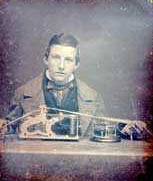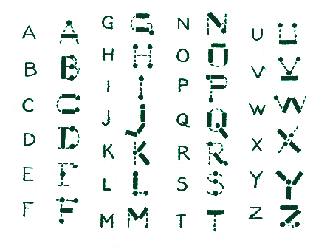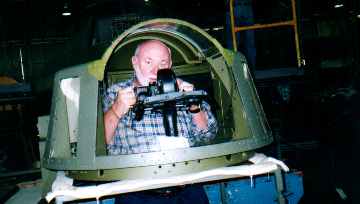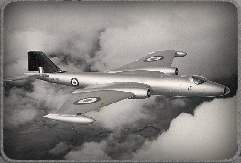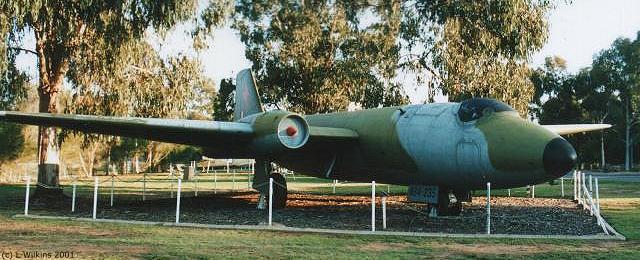|
|
||||||
|
|
Radschool Newsletter |
Vol 10 Page 4 |
||||
|
|
||||||
|
Morse Code.
Once upon a time it was the fastest, and in a lot of cases, the only way of getting a message from one place to another. Thousands and thousands of people learnt it, using it became a respected profession in both civvy street and in the military and there was a fierce pride amongst users at being the fastest to send/receive it. It was a job done by both blokes and blokettes and those good at it could identify a sender just from the way he tapped. Only as far back as 30 years ago it was still the primary comms link between Sydney airport and Lord Howe Island, but now it’s gone! But, how did it all come about???
It was developed by Samuel Finley Breese Morse who was born in the USA in 1791 and who lived until 1872. Morse initially studied art, graduating from Yale in 1810. He moved to London and gradually became well know for his portrait paintings and sculptures but his love was not in portraits but in painting historical pictures. He found that historical paintings did not sell, so disillusioned, he returned to the USA.
About this time, British inventor William Sturgeon (1783-1850) invented a device that laid the foundations for large-scale electronic communications: the electromagnet. Sturgeon displayed its power by lifting nine pounds with a seven-ounce piece of iron wrapped with wires through which the current of a single cell battery was sent. Then, In 1830 an American, Joseph Henry (1797-1878), demonstrated the potential of Sturgeon's device for long distance communication by sending an electronic current over one mile of wire to activate an electromagnet which caused a bell to strike. Thus the electric telegraph was born.
Pilot Talk.
Engine Failure: A condition which occurs when all fuel tanks mysteriously fill with air. Range: Usually 50klms beyond where all the fuel tanks fill with air. Roger: Used when pilots are not sure what else to say.
Morse was quick to see the potential for these new gadgets, but being short of money couldn’t buy insulated wire to wind his magnets, so he made his own by insulating his wire with tar, pitch and rubber. He realized that the alphabet could be individually coded into a series of long and short rings of the bell, and by using this code a message could be rapidly sent over a long distance. After five years of work, he was ready to demonstrate his telegraph. He hoped the men who saw it would like it and invest, bringing in funds necessary for further development, however, as is often the case, they were only tyre kickers. Watching the demonstration was a university student named Alfred Vail. His father and brother had an iron and brass business and Vail promised to build a sturdier model of the telegraph, so Morse made him a partner. In 1838, Morse took the new telegraph to Washington to get some R&D money from Congress to test it but he was knocked back again. Undaunted, in 1842 he prepared a dramatic presentation. Using tar, pitch, and rubber, he waterproofed two miles of wire and strung the wire underwater. In front of a huge crowd, a ship snagged the line and cut it, ruining months and months of hard work. In 1843 he made one more attempt to interest Congress. This time they authorised a grant of $30,000 to test it, and a telegraph line was built between Washington D.C. and Baltimore. On the 24th May, 1844 Morse tapped out his famous message, "What hath God wrought."
Although proven, his invention was slow to catch on, as the public did not trust information which had arrived to them via cable. Newspapers, for example refused to print news which had arrived via cable as they doubted its veracity, relying instead on pigeon post and human delivery. Reuters was to change all this, and in 1858, 14 years after its successful demonstration, the London Times printed a speech of Napoleon’s which was received in London using Morse’s code sent via the Channel wire. Shortly after this, Morse and his telegraph were known throughout the United States and Europe. A new age in communications had arrived.
In Ireland, on the 1st February 1999, the last official message was transmitted by means of Morse code.
|
||||||
|
||||||
|
|
||||||
|
The Canberra.
In 1950 the Australian Government approved the purchase of 48 English Electric Canberras to replace the RAAF's ageing fleet of Lincolns. Although the Lincoln had only entered RAAF service in 1946, by late 1948 it was already obvious it would quickly become obsolete so the search for a replacement began, resulting in the order for the 48 Canberras.These aircraft were manufactured under licence by the Government Aircraft Factory (GAF) at Fishermans Bend, Melbourne The first one off the line, A84-201, made its maiden flight at Avalon Airfield on 29 May 1953 and the last aircraft, A84-248, was delivered on 30 September 1958. The Canberras were delivered to 2 Sqn in 1954, 6 Sqn in 1955, 1 Sqn in 1958 and they also operated with 1OCU, ARDU and 1 and 2 Air Trials Unit. As well as building the airframe, the Rolls Royce engines were also built in Australia by the Commonwealth Aircraft Corporation (CAC).
The Australian Canberra was based on the British B2 version but with a few mods. The leading edge of the Australian aircraft’s wing was modified to carry more fuel, different radio equipment was installed in the aircraft, and the crew was reduced from 3 in the Pommie aircraft to 2 in the RAAF aircraft.
For those interested in stats, the Canberra has a max speed of 930 km/h; a cruise speed of 700 km/h; initial rate of climb 4,200 ft/min; operational ceiling 45,000 ft; radius of action (4,500 lb bomb load) 2,060 km and a max ferry range of 5,841 km. It’s max bomb load was 8,000 lb.
In 1967, 2Sqn, which was in northern Malaya, was sent to Vietnam, remaining there until June 1971 and while there achieved an enviable record flying with what was by then regarded by many as an obsolete bomber. Operating as part of the USAF's 35th Tactical Fighter Wing, 2Sqn's Canberras flew just six per cent of the Wing's sorties but inflicted 16 per cent of the damage. Overall, 11,963 sorties were flown in Vietnam, 76,389 bombs dropped and two aircraft lost.
After Vietnam, 2 Sqn returned to Amberley and continued flying the Canberras up until 1982, well past their bed time. During this period they were fitted with survey cameras and their role was switched from bomber to cartographic surveyor in Australia and also overseas, mainly in Indonesia and PNG. They finally got to rest on 30 June 1982 when 2 Sqn flew four aircraft over Brisbane and surrounding areas in a farewell flypast.
Today, the poor old Canberras are scattered around the countryside, sitting in parks, or outside RAAF bases, or on poles, forlorn and forgotten by most—but not by blokes that worked on and loved them while they were in their prime. The aircraft that sit in the paddock at Amberley, alongside the road to Warwick, are in a terrible state of repair, and we feel should either be tarted up or removed as they’re nothing but an eye-sore at present.
|
||||||
|
Chinese Proverb. Wife who put husband in doghouse soon find him in cat house. |
||||||
|
We received the following from John Griffiths who was on 4Appy., and who asked that we include it here as there are sure to be a few who will be interested….
“On Wednesday 13th March about 90 ex members of RAAF A&GRS and RadSchool at Ballarat in the 1940s, 50s, and early 60s gathered in Canberra for the 3rd reunion in recent times. The 2 Happy Hours were times for swapping many stories; the Dinner on Saturday evening was attended by 143 including partners and the BBQ on the final Sunday by about 100. The Wreath Laying on Saturday morning was held at the RAAF Association Memorial in wonderful sunshine and surroundings. We plan to do it again in 2005 and I want to hear from anyone who thinks they should be on our mailing list. Please send your Name, Address, Partner’s Name, Phone, Email and Course (if you can remember) to J Griffiths 25 Murray St Northmead NSW 2152, e johngriff@optushome.com.au” |
||||||
|
|
||||||
|
|
||||||
